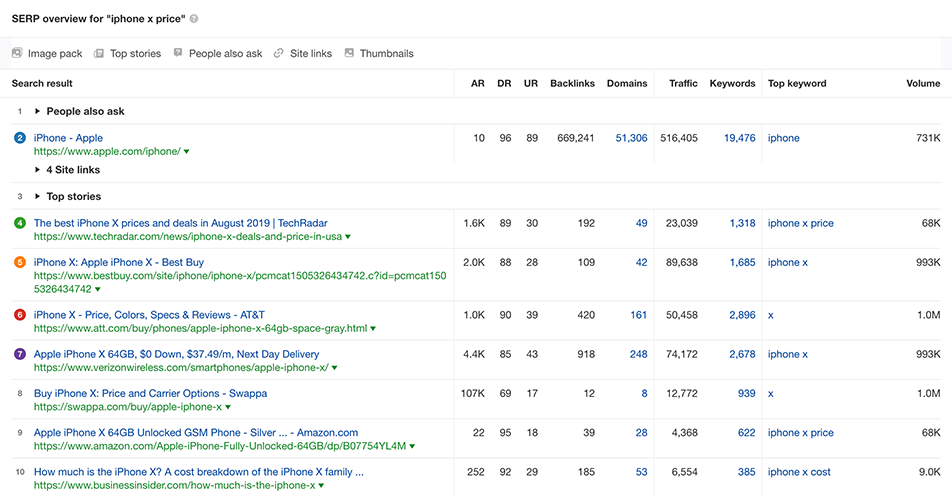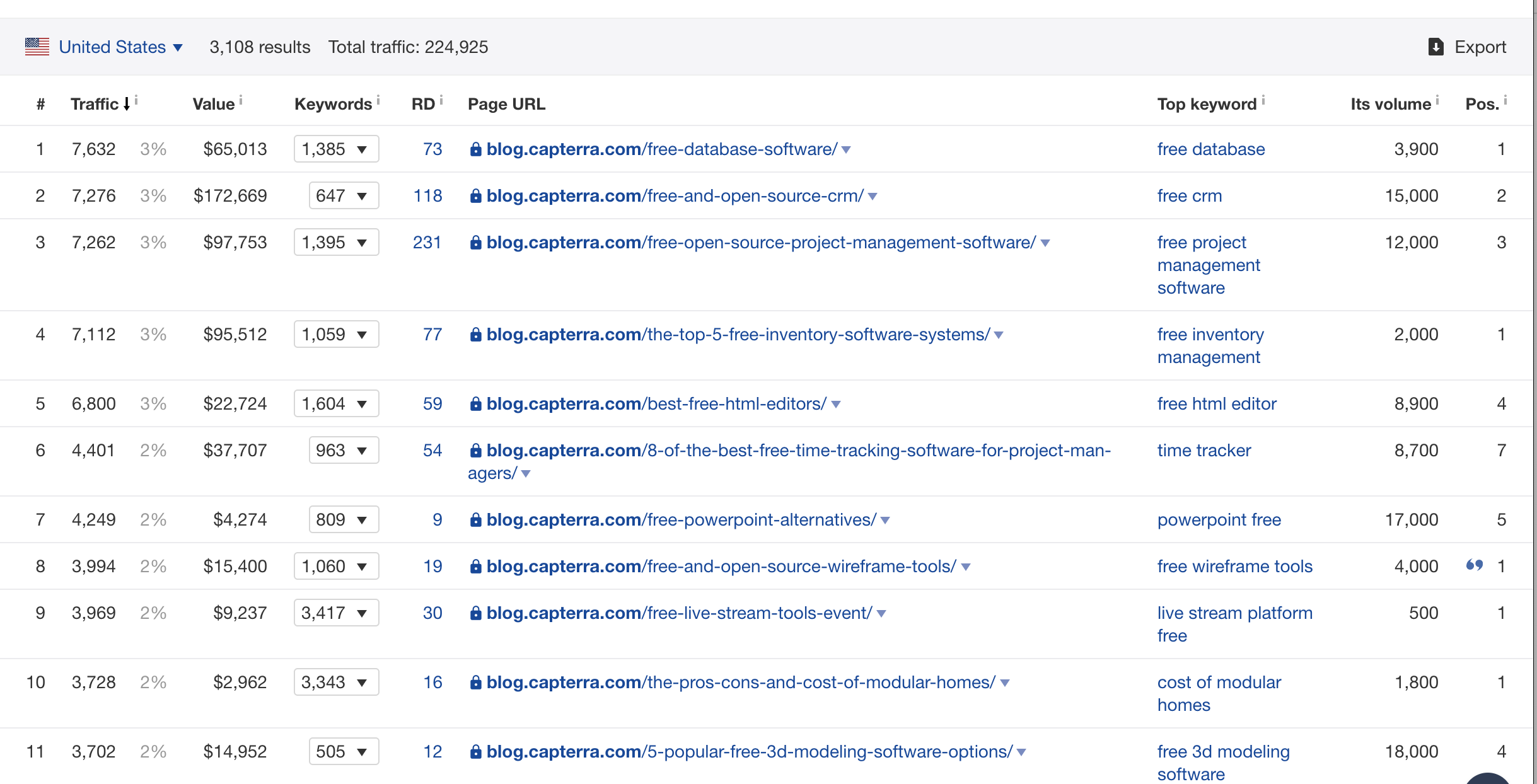Lately, I have seen many marketers hiring for content marketing roles aspiring to build a business blog at HubSpot Scale. It made me think about what do I know about building a business blog with 1 million page views.
Turns out not a lot, but so are the other Google searches that said they had answers to the question. Expect for a Neil Patel, but he also couldn’t do it without help from his team. In all honesty, here is why you should listen to me.
I have managed business blogs/website which had millions of page views for the brands that I have worked in the past. On a personal level, I have been managing multiple blogs for nearly a decade now. When you are at something for that long, you know a little more than everyone else when it comes to scaling traffic.
To make this article more actionable, I will be sharing insights from brands like HubSpot, Ahrefs, Wistia, G2, and other brands that have experience in driving massive traffic.
What’s does it take to build a business blog with 1 Million Page Views?
A business blog is different from a personal blog. When I write for my personal blog, my writing is more focused on myself. While writing for a business blog, I’m more focused on the business and the industry.
Every piece of content that you publish for your business has to drive organic traffic and business growth. So what is common among business blogs that have 1 million page views? I have compiled a list of seven key aspects that you should focus on when trying to build a business blog with 1 million page views.
1. Organic Traffic Drives Scale
You can’t scale your business blog to 1 million page views unless you can generate traffic organically. Business blogs with 1 million page views annually get nearly 86.52% of traffic from organic channels, reports a recent study conducted by Animalz. So does this mean other channels are worthless? Not really; when you are starting your business blog, the traffic from other sources is vital. Newer blogs always struggle to get organic traffic.

Another reason why organic dwarfs other channels is compounding. Organic is the only channel that compounds. The amount of effort you put in today will result in more traffic next week, next month, and years after that. Compare this to other channels like social. The average lifespan of a post is less than 18 minutes.
2. Traffic follows a Pareto Distribution
Pareto Principle states that 80% of consequences come from 20% of the causes. A few years ago, I had the privilege of attending a master class from Jeff Bullas. He mentioned how a single blog post on JeffBullas.com drove thousands of page views per day for the site.
Every blog has a handful of outliers that generate most of the blog’s traffic. Blogs with nearly 1 million yearly page views have a median of six posts with greater than 100K yearly page views. In nutshell, replicating the success of your top-performing content is key to your success.

The most successful content pieces on your business blog also rank for related keywords. Let’s look at the above example. While Tech Radar ranks for the keyword ‘iPhone x price,’ it also ranks for 1,318 other related keywords, driving an estimated 23,039 page views every month. The trick to growing your organic traffic faster is identifying the true potential of any keyword.
3. Decade long consistency
The median age of a business blog with 1 million page views was nine years, as per a recent study conducted by Animalz. Most brands on the list started at least a decade ago. However, most brands on the list didn’t start publishing content when they were founded.
Consider the HubSpot brand, for instance. They have been blogging for over a decade and have grown the blog’s traffic to over 7 million visitors. They have truly nailed their audience and their content. Does this mean that if you are consistent with your publishing schedule, you will reach 1 million page views? Successful blogs are better at creating content pieces that drive 100K page view posts.

Suppose we were to plot total lifetime page views on the x-axis against the number of posts with more than 100,000 page views on the y-axis. The scatter plot will clearly show that more 100K page views add up to higher total page views. But blogs don’t grow through one huge post or thousands of small posts. Successful blogs better understand what the audience needs, resulting in the foundation of high performing content.
4. Business Competitors and Content Competitors are different
If you are assigned to manage a business blog for a software review aggregator, you would consider your competition to be Capterra, Trust Pilot, etc. But if you deep dive into a tool like Ahrefs to see their best-performing pages, you notice they are not actually your competition.

Folks at G2 found that Capterra wasn’t really their competition. When they realized that Capterra’s best-performing pages had remained the same for over a year, they started looking at other blogs like HubSpot for inspiration to reassess their content strategy. Your company competitors and your content competitors are not always the same.
This realization helped G2 to change their perspective and grow their blog to over 1 million visitors. Your content competitors could be publishers who are better at building organic traffic. Considering they are much better at publishing educational content.
5. Measuring Engagement
It’s natural for blogs with massive organic traffic to see a high bounce rate. In fact, the medium bounce rate across business blogs with 10K-1M page views is 80.33%. When the bulk of your traffic is driven by organic search, users are likely to visit your site for a specific reason. There is little incentive for them to stay on the site once they receive the information they were looking for.
That doesn’t mean the visitor won’t return to your site. You can take some measures to retain the visitors on the site by including widgets that serve similar content or asking them to subscribe to your newsletter to reach them later.
It takes an average median time of 3 minutes and 15 seconds for a user to read 400 words. It’s perfectly fine if the user doesn’t read every single word on the page. In case your article is answering a specific question, make sure you provide the response upfront to deliver value in a shorter timeframe.
6. Link Building
The type of content that generates most traffic is different from the type of content that builds most backlinks. While ‘How to’ articles might be driving your lions share of traffic, articles on industry studies could be driving backlinks. It is important to follow a portfolio approach to content marketing by creating content that serves different purposes. The portfolio approach ensures that you are growing your blog both in terms of traffic and backlinks.

7. Topic Clustering
If you have managed a blog for a while now, you would know that it is easier to rank on topics related to your business or industry. But as you move to top-of-the-funnel keywords, it becomes difficult to rank for relevant terms.
Topic clustering is an approach that helps you to create a hub and spoke model by identifying a core topic and related adjacent terms. This approach helps with the following:
- Link equity passes on to different pages on the site.
- Enable search engines to identify semantic closeness of the keywords.
Almost every successful business blog that you would have come across uses the hub and spoke model to cluster related content together. HubSpot scaled their traffic to 7 million visitors per month using their approach. Here is Aja Frost, Head of Content & SEO at HubSpot, talking about her approach to scaling traffic.
Moving Forward
One of the essential ingredients for growing traffic is people. It is painstaking to grow your traffic, considering it requires time, effort, and resources. You need people who will follow the course and deliver consistently.
You need a team of writers, designers, SEO experts, and developers who feel equally excited about the mission. Content marketing doesn’t have a one-size-fits-all playbook, and it keeps changing every year. What worked for HubSpot might not work for you, and having a great team will make sure you adapt and tide over difficult situations.
